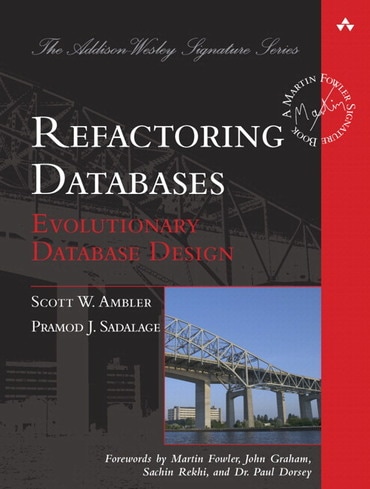Switch content of the page by the Role togglethe content would be changed according to the role

Refactoring Databases: Evolutionary Database Design, 1st edition
Published by Addison-Wesley Professional (March 3, 2006) © 2006
- Scott J Ambler
- Pramod J. Sadalage
Paperback
$39.99
Price Reduced From: $49.99
ISBN-13: 9780321774514
Refactoring Databases: Evolutionary Database Design
Published 2006
Need help? Get in touch